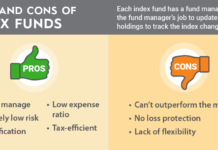When investing investors put their capital at risk. This risk changes according to events in the world. In particular, p2p investing is still a relatively new industry and thus is subject to more changes. Regulators, p2p lending platforms, borrowers, investors, loan demand, borrower choice and interest rates are agents shaping the peer to peer lending industry. These changes alter the risks and opportunities for investors.
Peer to peer lending is less “competitive” between investors than equity investing, because the choices, the variables and the entry points of these investments is more egalitarian in nature. This does not mean that all p2p investors will win all the time. Staying ahead of the pack requires scouting out the territory ahead.
Learn more: What is peer to peer lending? and Beginners guide to p2p lending.
Key elements:
- P2P loan portfolio performance
- Changes and updates on specific platforms (Example: Terms and Conditions)
- Secondary Market (Level and changes in activity)
- Broad indicators of the economy
- Specific economic indicators in the specific credit markets
Individual p2p portfolio performance:
- Late loans
- Total Bad debts
- Amount of bad debts
- Number of defaults
- Extended Loans
Any changes to the above variables will change the lending portfolio risk profile. If an investor’s tolerance to risk changes, then the investment strategy needs to be updated to reflect the higher risk of potential losses.
While defaults and bad debts are natural in the credit business, the interest earned should in the long term cover these losses. As of Feb 2017, most p2p investors are in a profit. Today’s situation (March 2017) should not be interpreted that p2p investors will always have a p2p happy ending at the end of the day!
Information specific to peer to peer platforms:
Peer to peer platforms serve both the borrowers and lenders while trying to outcompete similar companies. They do this by being better marketers, more efficient loan analysing software and a host of other tools. These changes can mean better or worse performance to your loan portfolio, The list below is some of the key variables to watch out for:
- New Competitors
- Investors unused or dormant capital (lack of loans or too much investors)
- Deal flow
- New loans being offered
- Changes in terms and conditions
- Changes in management
- New risks or warnings
- New loan originators and their loan conditions
- Buy Back Guarantee conditions and strength
- Provision fund level, use and conditions
- Changes in average loan terms
- Interest Rates
- Special discounts and Cashback offers
In depth tutorial: How to choose a peer to peer investing platform?
A Note on Interest Rates fluctuations:
Investors should be very cautious about chasing yield (interest rates) down the dark rabbit hole. The current bank account interest rates across the EU and UK are low, maybe artificially low. There is a difference between saving and investing. Saving is risk free (except for loss in purchasing power), investing has risk, the reward should reflect the risk.
One dirty way to measure if an investor is over extending himself or herself is to consider the choice of investing in a 7% p2p loan if interest rates in a bank account were at their historical 4%. Would investors still take the p2p loan risk at 7% in this case. (In fact, the historical average of 4% is also called the risk free rate, just because this is skewed it should not skew your investment decisions)
Specific Loan updates:
Some P2P platforms post regular updates on loans, especially in the case of large property backed loans, the info would cover the borrower’s ability to maintain the schedule of payments.
Loans whose risk profile has changed, may no longer be in line with the risk profile of investors. In this case investors can sell these loans on the secondary market if available. Diversification mitigates defaults to some extent.
Auto-Investor loan purchases & Pipe-line loans
Investing in loans on peer to peer lending platforms is done via two methods, either auto-investing or manual investing. The auto-investor performance depends on both your settings and the supply of loans (deal flow).
Purchases made by an auto investor should be monitored at least on a weekly basis. The performance of an auto-investor can change if interest rates, loan to value ratios change or the supply of loans dries up. Adjustments need to be made accordingly.
P2P Secondary Market monitoring, (tapping into the intelligence of the crowd)
Scanning the secondary market, can give an oversight on the pulse of the other investors on a particular platform, it can offer insights on investing strategies being used, which loans are no longer a favourite, and which others are being bought up quickly.
Regular scanning of the secondary market gives a feel of what are normal loan volumes sales, an uptick could be a warning that investors are trying to exit, if so it is time to find out why.
Updates and Changes in the peer to peer lending space:
Regulators and Central Banks, Financial Conduct authority and (really hope never ever) the SFO (Serious Fraud office) can be important sources of new information. Most of the time, the p2p blogosphere and mainstream media will pick any smelly fish up first, but delegating such responsibility to others is a risk in itself.
Changes in Economic Outlook:
- Stock market performance
- Unemployment rates
- Property prices
- Borrower defaults across the credit spectrum
- GDP trends
- Geopolitical events
- Government debt interest rate increases
- Shifts in age demographics
- Shifts in cultural demographics
- Business unfriendly parties coming to power
Peer to peer lending performance depends on borrower performance. Borrowers depend on the economy to generate an income to pay off the loans. If the economy strengthens or weakens so will the borrower’s ability to pay back.
The economy is a huge engine and different aspects of the economy affecting different parts of the lending and credit space.
For Example, The property market will be influenced by the property prices. Property prices are influenced by the unemployment rates and speculator activity. Unemployed residents have less purchasing power and property prices tend to be lower in times of high unemployment or employment offering lower wages.
Unemployment is relative to the competitivity of a county and internal market demand (amongst many other things). These two variables depend on how the country exporting and the country importing interact with each other in terms of tariffs, trade deals and demand and supply.
It’s all connected. The stock market is (or used to be?) the bellwether of future economic activity and can be an indicator of general borrower performance across the whole economy in the future.











